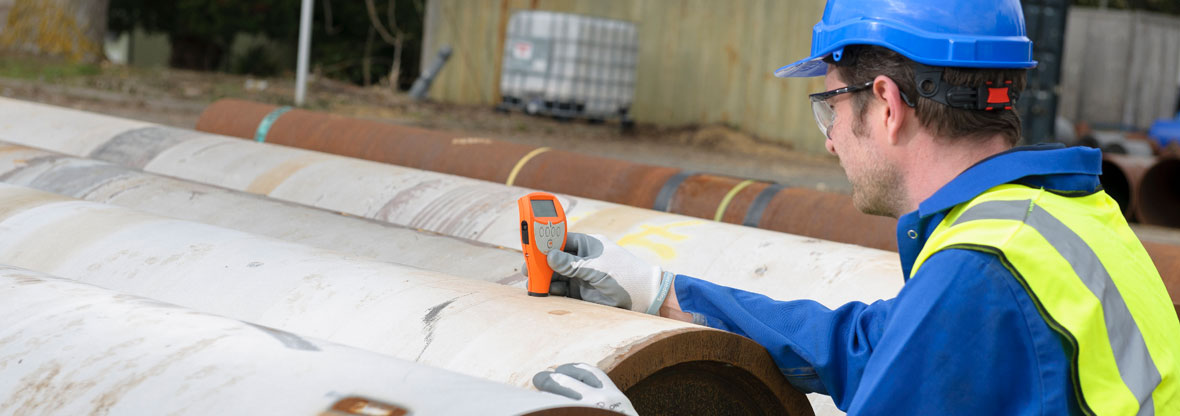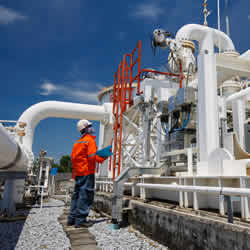
Ideal Practices for Pipeline Welding Inspection: Methods, Criteria, and Treatments to Attain Top Quality Assurance and Conformity
Efficient pipeline welding evaluation is crucial for guaranteeing the stability and security of vital facilities. By utilizing a combination of methods such as visual examination and advanced non-destructive screening methods, along with adherence to developed market criteria like those from ASME and AWS, companies can substantially enhance their quality assurance processes. However, the implementation of these best practices presents various difficulties that warrant mindful factor to consider. Comprehending the intricacies included in each stage of examination is crucial to accomplishing conformity and integrity in pipeline systems. What particular strategies can be used to navigate these obstacles effectively?
Importance of Welding Inspection
The stability of bonded joints is extremely important in guaranteeing the security and reliability of pipeline systems. Correct welding strategies and thorough inspection procedures are essential to stop failings that can bring about disastrous cases, environmental damage, and death. Pipeline Welding Inspection. Welding examination works as a safety net, recognizing defects such as fractures, porosity, and insufficient combination prior to they intensify right into severe concerns
Additionally, pipeline systems often run under high pressure and extreme conditions, making the quality of welds a lot more critical. Regulative compliance is an additional significant element, as various criteria dictate the quality guarantee processes that need to be stuck to in pipe building and maintenance. Failure to abide can result in economic losses and lawful ramifications.

The role of welding examination prolongs past mere verification of handiwork; it includes the guarantee of lasting operational honesty. This entails a methodical technique that includes not only visual inspections but additionally advanced non-destructive screening methods. Ultimately, efficient welding assessment is a financial investment in the longevity and security of pipe systems, guaranteeing they operate as planned while minimizing threats related to material shortages.
Secret Assessment Techniques

Visual inspection, often the very first line of defense, permits the identification of surface problems such as splits, damages, and porosity. Ultrasonic screening utilizes high-frequency acoustic waves to identify interior flaws, offering an extensive evaluation of weld stability. This non-destructive technique is specifically effective for determining discontinuities that might not be noticeable externally.
Radiographic screening includes using X-rays or gamma rays to produce photos of the bonded joint, disclosing internal defects. This technique offers detailed insights yet might require customized devices and safety and security factors to consider. Last but not least, magnetic fragment screening works for discovering surface area and near-surface suspensions in ferromagnetic materials, making use of magnetic fields and great iron fragments.
Industry Requirements and Regulations
Compliance with market criteria and policies is crucial for making certain the high quality and security of pipe welding examinations. These standards give a framework for finest methods in welding procedures, products, and assessment strategies, permitting organizations to decrease flaws and improve the stability of pipe systems. Key bodies such as the American Culture of Mechanical Designers (ASME), the American Welding Society (AWS), and the International Company for Standardization (ISO) state guidelines that are extensively recognized and taken on within the sector.
In the USA, laws from the Pipeline and Hazardous Products Security Administration (PHMSA) govern the safety and security of pipe procedures, mandating strenuous evaluation procedures. These standards not only serve to shield public safety and the environment however additionally make certain conformity with legal and legal commitments. Adherence to the pertinent codes, such as ASME B31.3 for process piping, is essential for keeping operational efficiency and regulatory conformity.
In addition, continual updates and alterations to these requirements mirror technological developments and progressing sector techniques, stressing the requirement for companies to stay informed and train personnel as necessary. Ultimately, durable conformity with established standards promotes trust fund and reliability in pipe infrastructure, safeguarding both properties and stakeholders.
Effective Assessment Procedures
Efficient evaluation treatments are essential for identifying possible problems in pipeline welds and making certain the total stability of the system. A methodical strategy to examination includes a number of crucial phases, including pre-weld, in-process, and post-weld evaluations. Each stage plays an essential role in preserving quality control.
During pre-weld assessment, it is vital to evaluate the products and joint configurations, making certain conformity with task requirements. In-process assessments include checking welding methods and specifications, such as warm input and take a trip speed, to avoid flaws from occurring. This phase allows for real-time adjustments to welding practices.
Post-weld evaluations consist of non-destructive screening (NDT) strategies like radiography, ultrasonic screening, and magnetic bit screening. These techniques help find inner and surface imperfections that could endanger the pipeline's capability. Paperwork of all assessment activities is vital, offering try here a deducible record that sustains compliance with market criteria.
Educating and qualification of assessment workers better improve the efficiency of these procedures. By adhering to an organized examination method, have a peek at these guys organizations can mitigate risks, make certain conformity, and eventually deliver pipes that satisfy strict security and performance requirements.
Common Obstacles and Solutions
Pipe welding assessment provides a number of usual obstacles that can affect the top quality and safety of the end product. One considerable obstacle is the irregularity in welding strategies and products, which can lead to inconsistent weld high quality. To resolve this, it is important to develop standard treatments and training for welders, making certain an uniform approach across jobs.

Environmental aspects, including temperature and humidity, can likewise impact the welding process, potentially bring about cracks or incomplete fusion. Applying controlled environments and sticking to pre-weld procedures can alleviate these risks.
Final Thought
To conclude, the application of ideal practices for pipe welding evaluation is crucial for ensuring quality control and compliance with industry requirements. A detailed technique, including various methods such as visual, ultrasonic, and radiographic testing, facilitates the identification of problems throughout all phases of the welding procedure. Pipeline Welding Inspection. Adherence to developed regulations and visit site effective inspection procedures not only improves the dependability and safety and security of pipe systems however additionally minimizes risks associated with welding problems, consequently promoting overall operational honesty
Conformity with industry criteria and regulations is vital for ensuring the high quality and security of pipeline welding inspections. These standards offer a framework for best techniques in welding processes, products, and evaluation methods, allowing organizations to minimize defects and enhance the integrity of pipeline systems.In the United States, guidelines from the Pipe and Hazardous Products Safety And Security Management (PHMSA) control the security of pipeline operations, mandating extensive evaluation protocols. A systematic strategy to evaluation incorporates a number of key phases, including pre-weld, in-process, and post-weld assessments.In final thought, the implementation of ideal methods for pipe welding assessment is necessary for guaranteeing top quality guarantee and compliance with market standards.
Comments on “Pipeline Welding Inspection: Essential Actions for Reliable Pipeline Building”